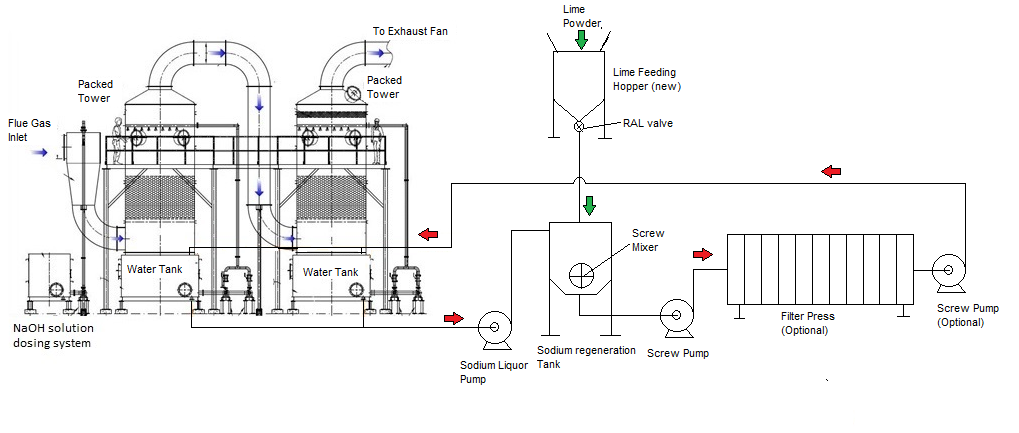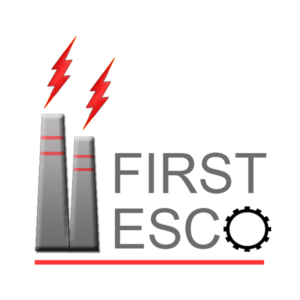SOx Scrubbing
Scrubbers are robust and effective Sox abetment devices to be used for the main engines, but also for the auxiliary engines and the boilers, using water as a medium for sulphur absorption. In the end of the day, we wash the exhaust gases. Also, as a side effect, scrubbers provide the particulate removal mainly in mass and not in number.

Components Of Scrubbers
There are five basic components for the scrubber systems.
- For sure, a source of water, sea water or fresh water, plus a reagent.
- Then, we need pumps, to give a specific pressure for the spray nozzles and also because the scrubber are placed in the higher level of the ship from the base line
- Then, we have the scrubber tower, where we can recognize three different sections. The quench section, where we lower the temperature of the gases. The absorber section, where the reaction take place and we absorb the sulphur into the water. And, lastly, the droplet separator, where we separate the water from the exhaust gases so that they can be dry at the stack.
- Then, we have the treatment plant for the wash water (for the open and the closed loop systems)
- And most importantly, the monitoring system. The acceptance of exhaust gas cleaning is based on continuous monitoring over air and water parameters.
Parameters Of Scrubbers
The five main design parameters that differentiate the different makers are as follows:
- The water flow rates. In the end, how many water do we use to scrub exhaust gases?
- The in line and the by-pass design. With the in line design, we have the quench section at the bottom. Contrary, with the by-pass design, the quench is on the side. In general, the inline design offers a taller, but slimmer solution compared to the by-pass design, which is fatter, but lower in height.
- We have the water and gases mixing method, the internal design of the tower. Typically there are open spray towers, the packed tower, the cyclonic tower or the oldest plates towers.
- Now, we have the nozzle design and the spray patterns that increase the gas and liquid contact and increase the absorption efficiency. Different makers have different strategies to do that.
- Then we have the diameter and the height according to the gas volume that you want to treat. Also, the diameter to settle the internal velocity for the exhaust gases and the height, because of the reaction time needed.
The most important reason you need a scrubber is mainly for long term operational flexibility for 2020 and beyond. Against the changes on the fuel prices for the marine gas oil and also for the ascertained availability, you need a scrubber when the global gap will come.
Most of the customers look at the scrubbers only as an upfront investment. But, in reality, it is a long term serving opportunity. Even if the fuel prices dropped, the differential between HFO and MGO is steadily around 250$ per tons. Operators can save between 2-3 M$ of pure fuel costs per annum, not taking care of the operating expenses of the scrubber. The pay back period is less than three years including installation cost, depending on time spent in ECA. Scrubbers are suitable for every ship type.
Responding to the criticism for the scrubbers about the pollution of the sea and that they aren’t a mature technology, I will try to expand a little bit about the pollution of the sea. The Sox emissions from the shipping are in continuous expansion, because the market is growing. This is good news. But, the Sox emission causes dry and wet precipitations. The dry precipitations, like the aerosol, cause asthma, heart and lung disease. The acid rains on land with PH 4 affect the forests, the buildings and the lakes. The acid rain on sea with PH 4 is a bit different, because the sea water act as a huge scrubber. Thanks to the water alkalinity, we can transform the sulphuric acids in to harmless sulphates and sulphites preventing the water acidification. But for sure, the metals and the particulate matter and the PAH will still remain in the water, because the sea water can’t do any treatment.
With scrubbers, we avoid all the Sox dry precipitations, the aerosol and the acid rains. From typical ferry ships, we can save 500t CO2 emissions per year per ship. From large containership is calculated that we save about 2000t per year per ship.
Also, we provide a continuous monitoring of the water quality, so we guarantee the PH higher than 6.5 at 4 meters, which is recognized as a neutral PH. Then, we check turbidity, as a suspended solid indicator. Lastly, we check the PAH, as an unburned compound indicator.
